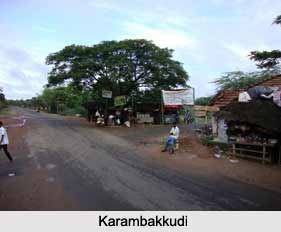 Karambakkudi is located in the district of Pudukkottai of Tamil Nadu.
Karambakkudi is located in the district of Pudukkottai of Tamil Nadu.
Location of Karambakkudi
The strategic location of Karambakkudi is also significant. It lies approximately between 10.47 degree North and 79.13A degree east.
Geography of Karambakkudi
Karambakkudi rises approximately to a height of 36 metres or 118 feet above the mean sea level.
Population of Karambakkudi
The total population of Karambakkudi has been enumerated to be 12,007. Just like other places of India, in Karambakkudi, the number of males is more than females. This is evident from the individual population rates of male and female. In other words, the male populace constitutes of 51 percent, while the rate of female population comprises of 49 percent. In Karambakkudi, 11 percent of the total population is below six years of age.
Education of Karambakkudi
The literacy rate of Karambakkudi is a yardstick for gauging the progress and development of a particular place. Regarding Karambakkudi, it can be inferred that the development has occurred here. The reason is that the average literacy rate of Karambakkudi is 72, which is even higher than that of the entire nation. 59.5 percentage is the average literacy rate of India. After analyzing the report thoroughly, one can decipher the rates of male and female literacy and that too on individual basis. Thus male literacy rate constitutes of 78 percent, while the rate of female literacy is less than that of males. 66 percent is the female literacy rate.



















